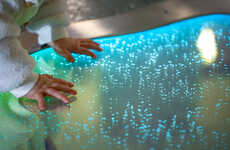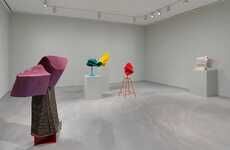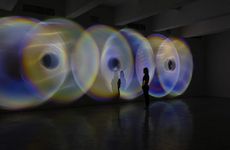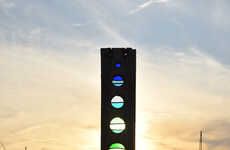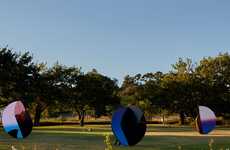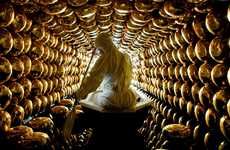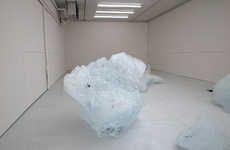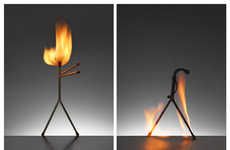
Lee Baker Uses Light and Color to Represent Opposite Forces
Ana Lopez — December 28, 2011 — Art & Design
References: leebakerart & mymodernmet
Art has the capacity to illustrate ideas and concepts through abstract shapes, as shown by the colorful installation by Lee Baker. This rainbow-inspired construction is entitled Refractive Monolith and consists of a 3D piece made of 10,000 meters of acrylic yarn that represents concepts of urbanization, aesthetics and looming catastrophy.
The vivid hues against the gray wall highlights the message the artist tries the communicate: “As with Baker’s paintings the joyous colors give a reassuring sense of security, while at the same time the spectrum of laser-like yarn represents the volatile infrastructure and relative weakness of buildings,” according to the press release. Even though this installations shines because of the colored wool, one can’t help but notice the dark patches around the corners that shows contrast.
Commissioned by The Future Tense, the Refractive Monolith by Lee Baker is an amazing structure that shows how two opposite forces—light and darkness—create beauty and harmony.
The vivid hues against the gray wall highlights the message the artist tries the communicate: “As with Baker’s paintings the joyous colors give a reassuring sense of security, while at the same time the spectrum of laser-like yarn represents the volatile infrastructure and relative weakness of buildings,” according to the press release. Even though this installations shines because of the colored wool, one can’t help but notice the dark patches around the corners that shows contrast.
Commissioned by The Future Tense, the Refractive Monolith by Lee Baker is an amazing structure that shows how two opposite forces—light and darkness—create beauty and harmony.
Trend Themes
1. Abstract Shape Installations - Exploring art installations that use abstract shapes to convey ideas and concepts, creating immersive experiences.
2. Colorful Urban Representations - Using vibrant colors and urban elements to represent contrasting forces and ideas in art installations.
3. Contrast and Harmony in Art - Exploring the juxtaposition of opposing forces, such as light and darkness, to create visually striking and thought-provoking art pieces.
Industry Implications
1. Art and Design - Artists and designers can leverage abstract shape installations and vibrant colors to create unique and immersive experiences for viewers.
2. Urban Development - Urban planners and architects can draw inspiration from colorful urban representations in art to explore the balance between aesthetics and infrastructure resilience.
3. Interior Design - Interior designers can incorporate contrast and harmony in art pieces to create visually captivating spaces that evoke emotions and contemplation.
3.2
Score
Popularity
Activity
Freshness





